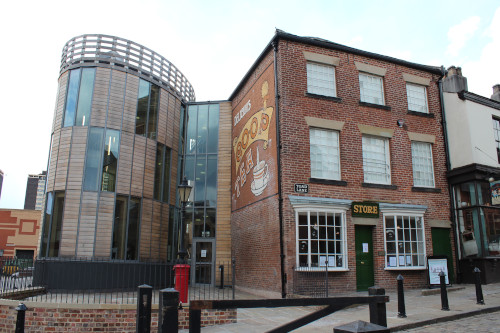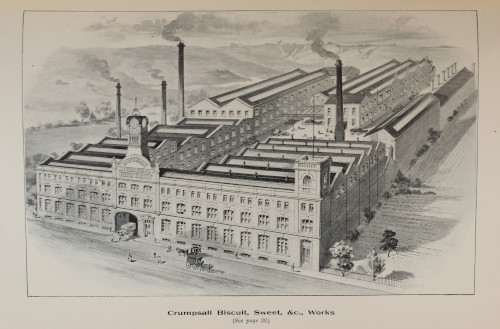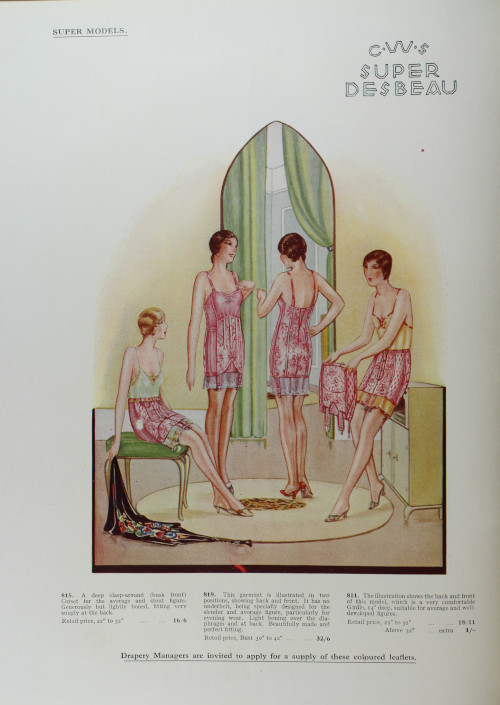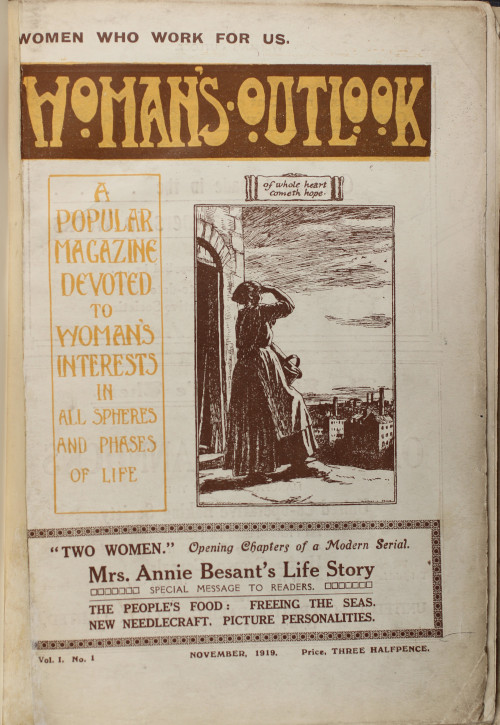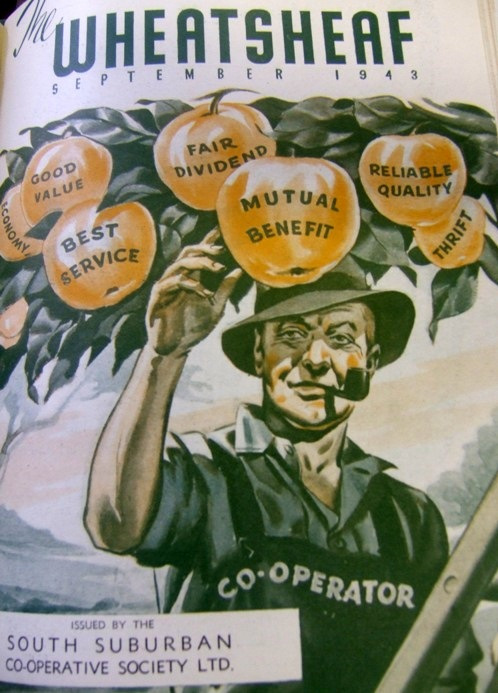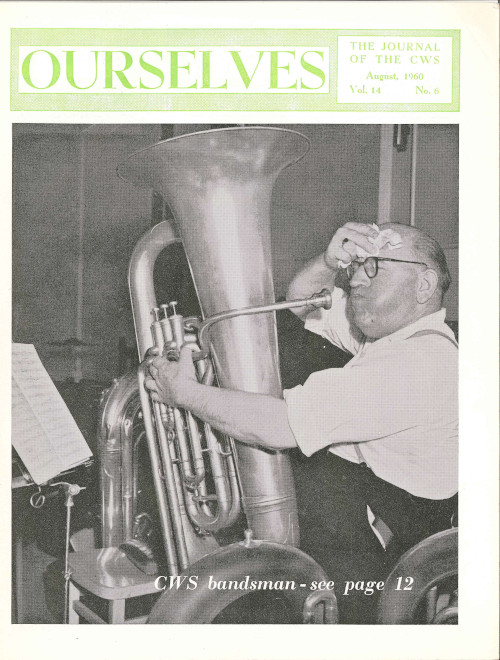Archives Hub feature for December 2024
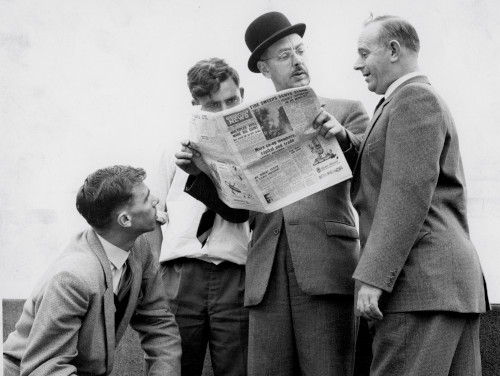
This year marks 180 years since the founding of Rochdale Equitable Pioneers Society – recognised as the first successful consumer retail co-operative. Toad Lane in Rochdale (now a museum) opened for business on the evening of 21st December, 1844. The society’s founding principles became the blueprint for the values and principles that define how the modern co-operative movement operate around the world today.
The Rochdale Equitable Pioneers Society
The 1840s were difficult times for working people: unemployment, short-term jobs and wage cuts, paired with increasing food prices led to poverty for many people. Food was often adulterated, for example, chalk was used to dilute flour, and tea was either re-used or contained other leaves.
In August of 1844, a group of 28 Rochdale workers met to form a co-operative society. Several of the Pioneers including Miles and Samuel Ashworth and William Cooper were flannel weavers and the majority came from Chartist or socialist backgrounds. They saw co-operation as the best way forward to give ordinary people control of their own organisation with all members having an equal share in the decision making and receiving a fair share of the profits. They named their co-operative ‘The Rochdale Society of Equitable Pioneers’ (REPS).
Theirs was not the first co-operative but they were the first to come up with a set of principles, to run one successfully for the benefit of the members and to establish a ‘co-op law’ to create solidarity in the movement. The ‘Rochdale Model’ became the foundation for other co-ops and through various mergers they became the Co-op Group, the biggest retail co-op in the UK.
Most people think a co-op is a grocery store, but there are many different types of co-ops working in every sector of the economy as well as providing grassroots solutions in communities. All co-ops are independent although are encouraged to work together as part of the wider movement.
Libraries and education
Education for members was at the heart of the co-operative movement. One of the original principles developed by REPS which remains with us today is that it offers education and training to everyone involved, so they can develop the co-op and promote the benefits of co-operation.
The Pioneers allocated a percentage of the profits towards education and took over the top floor of Toad Lane as a reading room and lecture hall. Most other co-ops had a room or a hall for learning and enjoyment. In 1867 REPS expanded to a Central Premises with dedicated library reading room and lecture theatre for 1500 members; it was just up the road from their first shop at Toad Lane.
The collections that we have at the Co-operative Heritage Trust cover the enormous history of the co-operative movement and include society business records, correspondence of Robert Owen and George Jacob Holyoake, photographs, advertising and education records, Women’s Guild collections and a large number of periodicals.
Some Examples from The Periodical Collection
The Periodical Collection spans from the early 1800s and continues to be added to today. There are periodicals from various societies, such as ‘The Herald’ from the Manchester and Salford Equitable Society, cultural magazines such as ‘Millgate Monthly’, periodicals for all co-op members, written for shop managers, college students and women’s guilds and we also hold all copies of the Co-op News first printed in 1871. The publications highlight issues and debates that were of import at the time of publication and aid the researcher to see trends and social changes both nationally and internationally. They contain information on the development of co-operative ideas within the labour movement.
Early Journals
The Archive holds a number of periodicals from the early-nineteenth century which demonstrate early ideas about co-operation and social reform. These include The Brighton Co-operator, which was edited by Dr William King, an early advocate of co-operation, as well as The Crisis, which was produced by Robert Owen. The collection also holds copies of The Reasoner, in which George Jacob Holyoake was involved.
We also have copies of a short lived publication called ‘The Rachde Kronikul un Workin Mon’s Lantrun’ (The Rochdale Chronicle and Working Man’s Lantern) 1852 -1853. This was a short-lived publication from 1852-1853 produced by the Rochdale Co-operative Society and written in Rochdale dialect. This short-lived publication was produced to support independent journalism and raise the profile of co-operative and socialist content for working class communities.
It was available in the library of the Rochdale Equitable Pioneers Society, but accessible as intended to be read aloud at a time the movement were promoting equality of education for the masses. Other examples of dialect writing, such as Ethel Carnie Holdsworth’s work, can be found in copies of Wheatsheaf and the Co-op News.
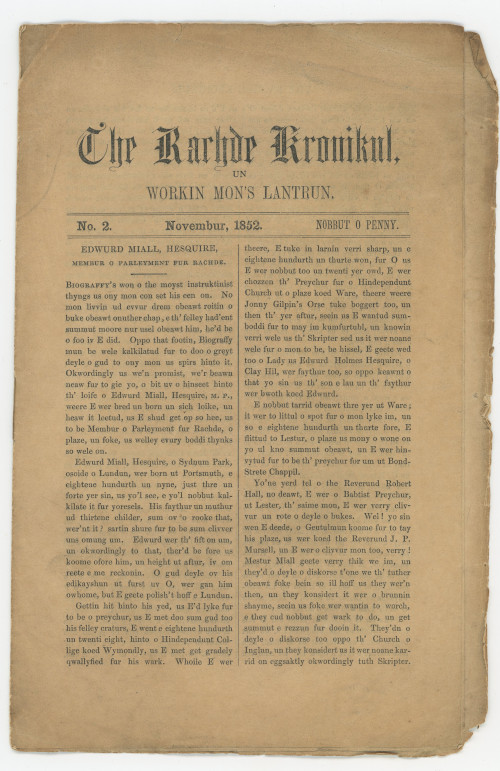
The CWS Annuals, published from the 1880s to 1960, gave information on the work of the Co-operative Wholesale Society and the Scottish Co-operative Wholesale Society. They contain trade figures and statistics as well as information on various factories and reports on the work of co-operative trade internationally. These Annuals are useful for research into trade figures, production and statistics of the CWS and SCWS and the early volumes include line drawings of the factories and other premises. They also included essays on trade and society outside the co-operative movement, by some of the foremost thinkers of the day.
The Producer
The Producer, which ran from 1916-1966, was a magazine for employees of co-operative societies. Its focus was on co-operative trade and products, with news from co-operative societies in the UK as well as internationally. There was also news on employees as well as features on window dressing and product display. The Producer is useful for news stories of co-operative societies, including productive co-operatives, as well as the international co-operative movement, and overseas trade. It also has articles on prominent individuals within the movement.
Millgate Monthly
First published in 1905, the Millgate Monthly, sub-titled ‘A Magazine of Progress, was a cultural magazine containing articles written by co-operators on social issues, as well as articles on horticulture, short stories, poetry and reviews. It changed its name to simply The Millgate in 1928 and ceased publication in 1953.
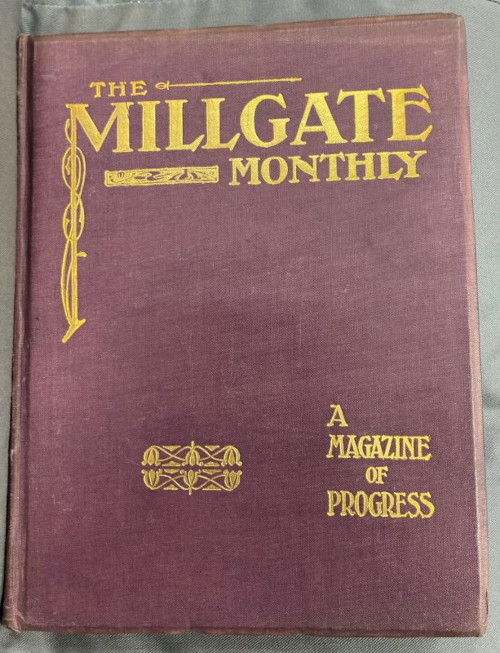
Women’s Outlook
This is one of our most frequently requested records as it is a useful social and political history record of the modern period. It was the magazine of the Co-operative Women’s Guild and ran from 1919-1967. It focused on issues that were relevant to women such as gaining the vote, employment and maternity, highlighted the lives of women involved in political struggle alongside knitting patterns, short stories, household hints and recipes. Its editors included Mary Stott in the 1930s ‘40s and ‘50s, who went on to edit the women’s pages in the Guardian. It was international in its perspective and there were regular features on women and events across the globe.
Wheatsheaf
Published between 1896 and 1964, The Wheatsheaf was a monthly publication for members of co-operative societies and given away in stores. It was published by the Co-operative Wholesale Society and had a central section that was national, while the outside pages were published for individual consumer co-operatives and contained local news.
It contained short stories, household hints and reports of events within the co-operative movement. There were also pages specifically aimed at women and children. As mentioned previously, Ethel (Carnie) Holdsworth, a working class writer who had much of her work published in the journal.
In 1946, it was relaunched as The Co-operative Home Magazine, becoming just Home Magazine in January 1959. This was a monthly publication for members of co-operative societies.
Ourselves
This was a journal for CWS employees featuring staff news various sport and social groups for staff and updates on stores developments. Staff wellbeing and sense of community can be seen in the pages of this periodical and is a great recorder of the culture of workers at the time.
Co-op News
The Co-op News is now a monthly print and online news magazine and website about co-operatives around the world. First published in 1871 as The Co-operative News, it is the world’s oldest co-operative newspaper. It was published weekly when it began and was a means for co-operators to promote to the world their new ideas of cooperation.
The Co-operative Newspaper Society (later Co-operative Press) was formed in 1870 and registered as a co- operative, and the first national newspaper of the co-operative movement, called the Co-operative News and published weekly from September 1871 as “A Record of Industrial, Political, Humanitarian, and Educational Progress”.
The paper differed from other papers in that there were no adverts on the front page, a sign of a more radical publication. The earliest papers covered local news from societies, national news, international news and campaigns and propaganda, later having a Women’s Corner, a men’s corner, poetry and stories and letters to the editor. It later became more political with the formation of the Co-op Party and the allegiance to the Labour Party.
The newspaper was available in stores, by subscriptions and in many of the libraries that the societies had for the education of their members. The newspaper is still published monthly as an online and print paper today and is one of our most used resources in the reading room.
Details of all our periodicals can be found on Archives Hub.
Jane Donaldson, Archivist
The National Co-operative Archive, Manchester
Co-operative Heritage Trust
Related
Descriptions of other collections held by National Co-operative Archive can be found on Archives Hub here: https://archiveshub.jisc.ac.uk/search/locations/c0e3eaca-cba5-3c18-8d3d-3fde15994bf8
All images copyright Co-operative Heritage Trust. Reproduced with the kind permission of the copyright holders.

